Colonial City of Santo Domingo
Santo Domingo, Dominican Republic, is a capital city of great cultural significance. As the earliest European settlement in the Americas that is still inhabited today, it has been recognized as a UNESCO World Heritage Site. The city showcases a rich history, stunning old buildings, and a lively culture that reflects its past. Many tourists are drawn to Santo Domingo for its blend of historical sites, modern facilities, and beautiful beaches. It is a vibrant city with a diverse atmosphere, making it a famous destination for visitors.
Table of Contents
Where is the Santo Domingo located?
Santo Domingo is a city on the southern coast of the Dominican Republic, near the beautiful Caribbean Sea. It is on Hispaniola Island, which is shared with the neighboring country of Haiti. The city is situated where the Ozama River flows into the sea. This river has played a significant role in trade and safety throughout the city’s history. The city is the heart of the Dominican Republic, playing a central role in politics, culture, and the economy. It also has good transportation connections, making it easy to travel to different parts of the island by road or plane.
Inscription of Santo Domingo
The Zona Colonial, or Colonial City, in Santo Domingo, was recognized as a UNESCO World Heritage site in 1990. In 2024, the area identified as part of this heritage site was minor updated. This inscription highlights its importance as the oldest European settlement in the Americas. The area showcases the history and culture that emerged from European exploration and colonization. It also represents the blend of native and European influences that have shaped the region’s past.
What is the history of Santo Domingo?
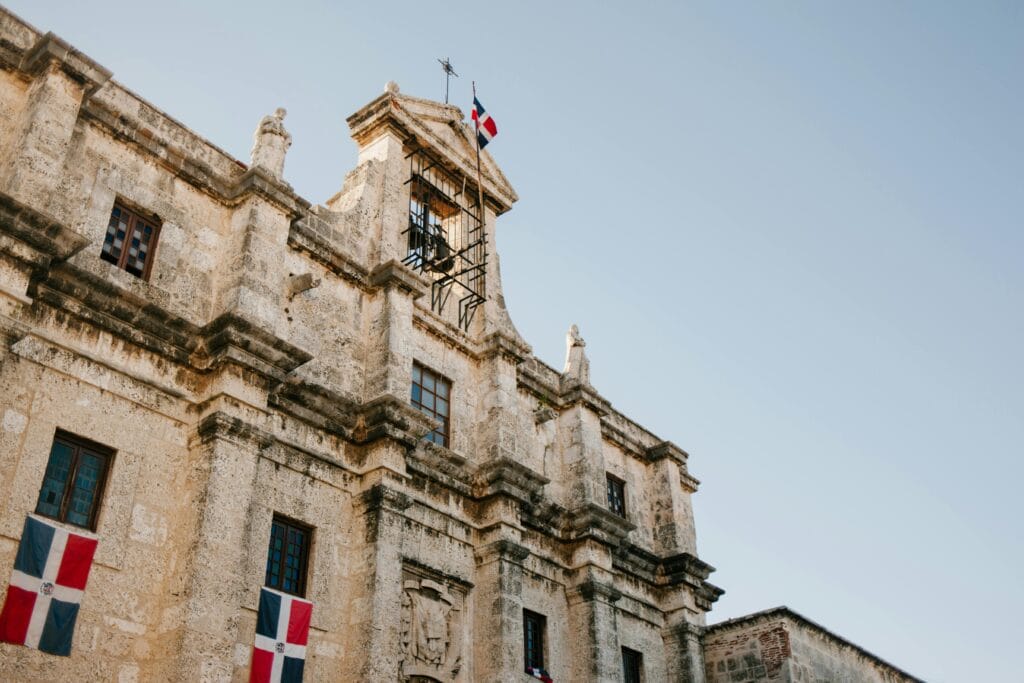
Santo Domingo is a city on the southern part of the island of Hispaniola, where the Ozama River flows into the sea. It was the first settlement from which Santo Domingo de Guzmán, the capital of the Dominican Republic, was created. Santo Domingo is known as the City of Firsts because it holds a unique place in history. It’s the only city from the 15th century still standing in the Americas. It was the first city to have defensive walls, with notable buildings like the fortress of Santo Domingo and the Torre del Homenaje.
Santo Domingo was home to some of the very first institutions in the Americas. These included the Cathedral of Saint Mary of the Incarnation, the Monastery of Saint Francois, Saint Thomas Aquinas University, Nicholas de Bari Hospital, and the House of Trade. The Colonial City of Santo Domingo was the first lasting settlement in the New World and served as the capital of the West Indies. It was also the first major center of Spanish influence in this part of the world.
When Christopher Columbus reached the island in 1492, Santo Domingo became the first city in the Americas to build important places like a cathedral, a hospital, a customs house, and a university. The city was founded in 1496 on the eastern side of the Ozama River and was established by Bartholomew Columbus in 1498, following directions from the Catholic kings.
What is the architecture of Santo Domingo?
Santo Domingo is a UNESCO Heritage Site and a historic area that spans 106 hectares. It is surrounded by protective walls, bastions, and forts. Inside, you’ll find 32 streets that form a grid of 116 city blocks, featuring buildings that are mostly one or two stories tall and made from materials like stone, brick, or earth.
In 1502, Governor Nicolas de Ovando moved the city’s main institutions to the west side and designed the city with a grid layout starting from the Grand Place, also known as Plaza Mayor. Santo Domingo was created in a grid layout, a plan that influenced many other towns in the Americas.
The layout of the streets and the style of the buildings have mostly remained the same since the 15th century. That makes Santo Domingo a unique place, as it’s the only living urban center that still showcases characteristics from that time period. The Colonial City of Santo Domingo is known for its beautiful Gothic buildings and rich history.
What are the most famous places in Santo Domingo?
Santo Domingo is full of fascinating history and vibrant culture. Some must-see places in the city include:
- The Cathedral of Santo Domingo, which is the oldest cathedral in the Americas,
- Columbus Memorial Lighthouse,
- Los Tres Ojos (a stunning set of lagoons),
- Alcázar de Colón (a historic palace),
- Calle Las Damas (the earliest street in the New World), and
- Fortaleza Ozama (an ancient fortress).
These locations offer a wonderful mix of the country’s rich history, cultural significance, and natural beauty.
What is the Cathedral of Santo Domingo?
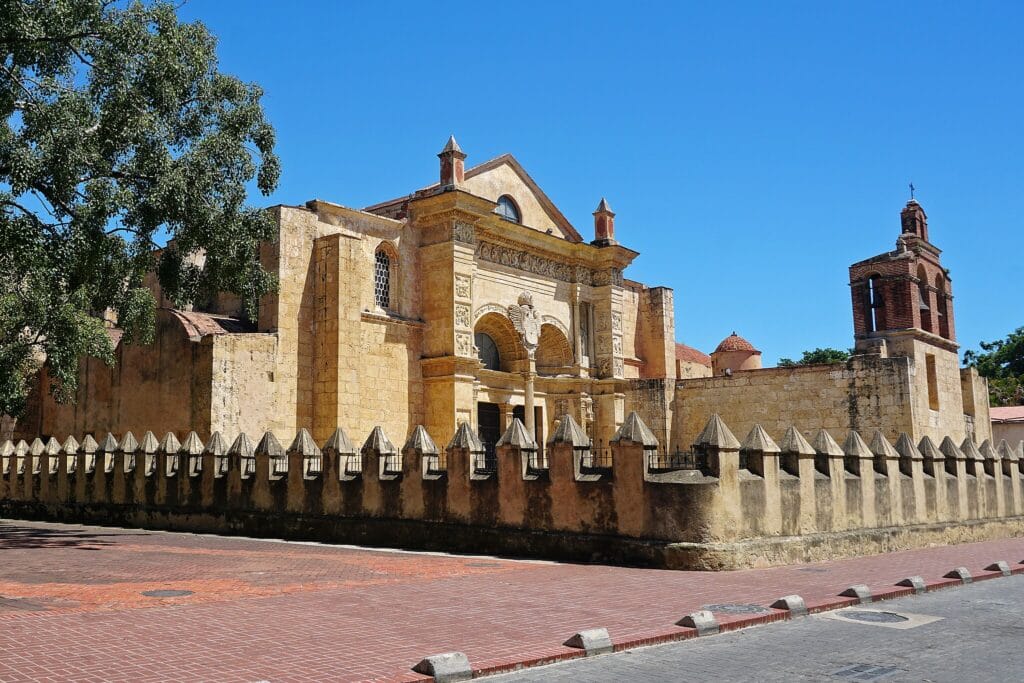
The first cathedral built in the Americas is the Catedral Primada de América, also known as the Cathedral of Santo Domingo. Officially called the Basilica Cathedral of Santa María la Menor, this impressive building showcases different architectural styles, including Gothic, Renaissance, and Baroque. It is situated in the historic Zona Colonial of Santo Domingo. The Catedral Primada de América is a significant symbol of the early European influence and the spread of Christianity in the Americas, making it an important historical and religious site in the region.
What is the Columbus Memorial Lighthouse?
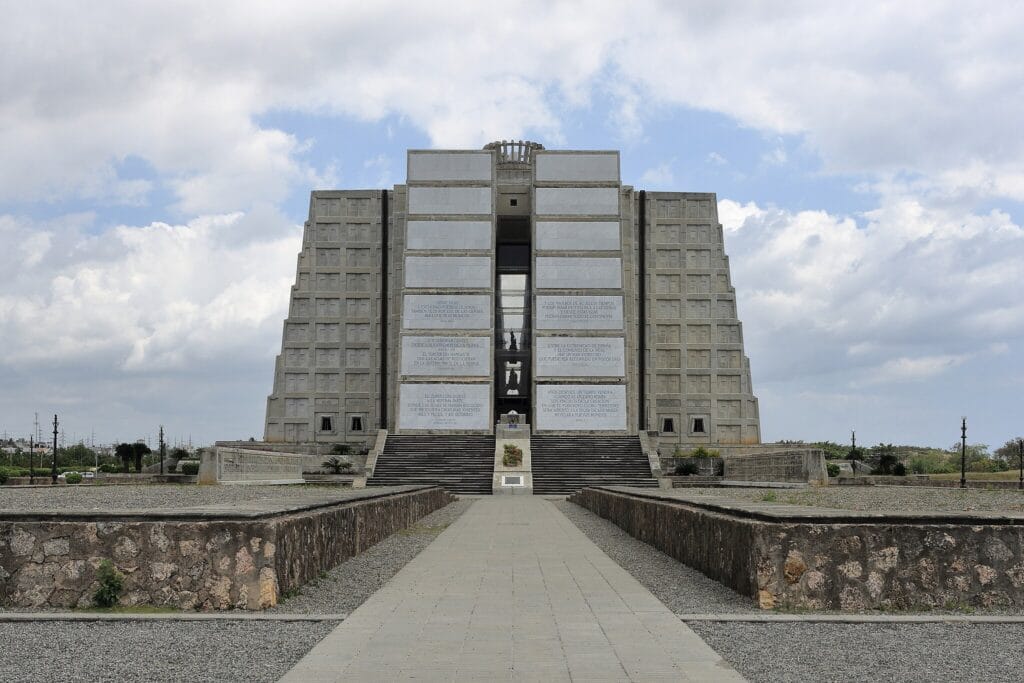
The Columbus Lighthouse, commonly called Faro a Colón, is a significant landmark and museum in Santo Domingo, Dominican Republic. This impressive structure is shaped like a cross and serves as a tomb for Christopher Columbus, the famous explorer. Besides being a resting place, the lighthouse is a center for cultural activities. It plays a vital role in Santo Domingo, offering visitors a chance to learn about Columbus’s journeys and the effects he had on history. The site is not only historical but also cultural and symbolic, making it a fascinating place for anyone interested in the past.
What is the Los Tres Ojos?
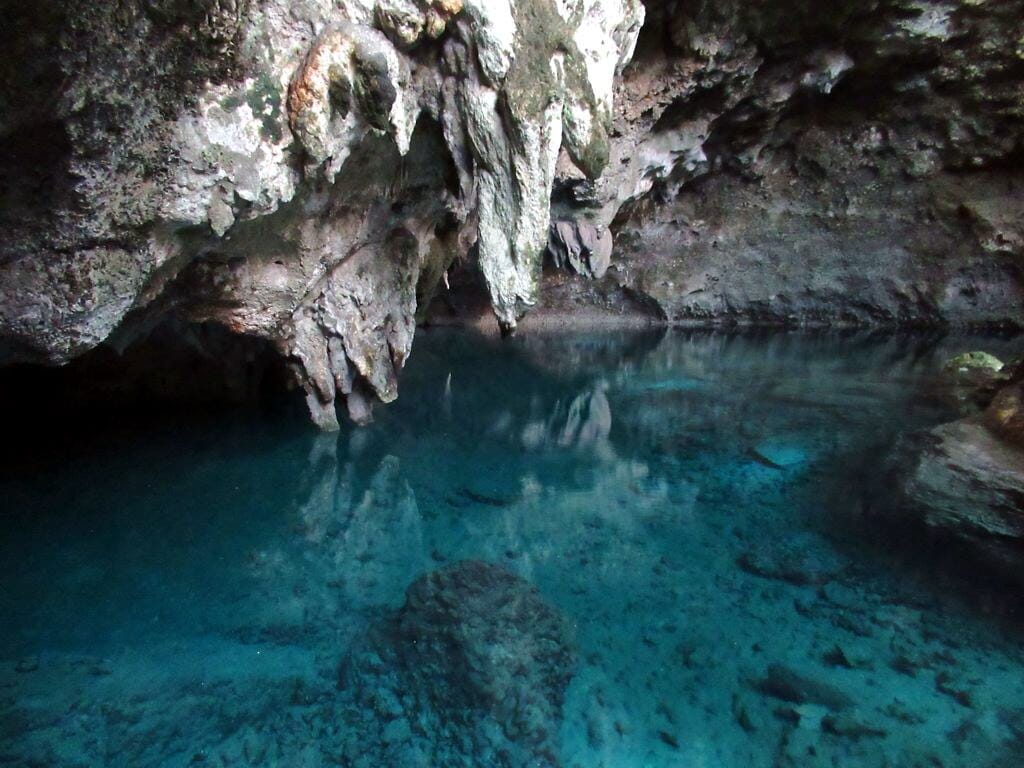
The Three Eyes, or Los Tres Ojos in Spanish, is a stunning natural site located in Santo Domingo Este, near the capital of the Dominican Republic. This unique place features three beautiful caves, also known as sinkhole lakes or cenotes, each with its own distinctive qualities. These caves were formed millions of years ago and offer a glimpse into the area’s fascinating geology.
Los Tres Ojos is one of the top attractions in Santo Domingo. It is perfect for anyone who loves nature, enjoys adventure, or wants to experience the incredible beauty of the Dominican Republic. Visiting this site will definitely leave you in awe!
What is the Alcázar de Colón?
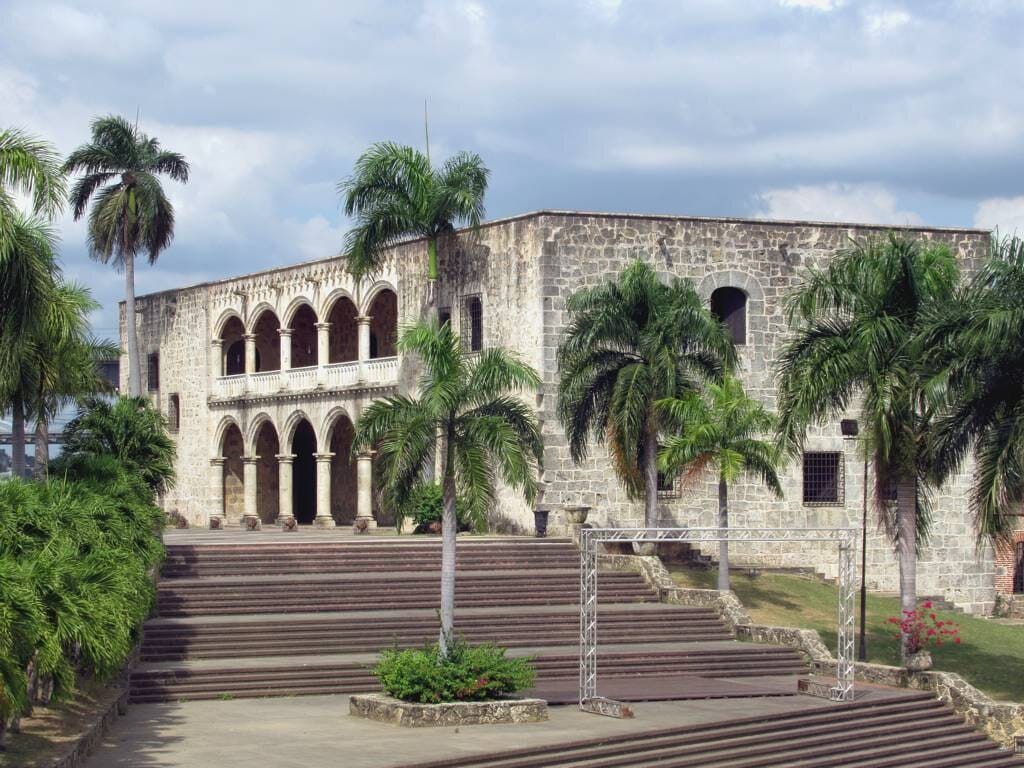
The Columbus Alcazar, also known as the Alcázar de Colón, is an important and famous historical site located in the Zona Colonial of Santo Domingo, Dominican Republic. This palace was home to Diego Columbus, the son of Christopher Columbus, who was an important figure in the early days of the Americas. The Alcázar showcases the impressive style of Spanish colonial architecture, blending different influences.
Visiting the Alcázar de Colón is a must for anyone interested in the early history of the Americas. It gives a fascinating glimpse into the life during colonial times and highlights the role of the Columbus family in shaping the Spanish Empire in this part of the world.
What is the Calle Las Damas?
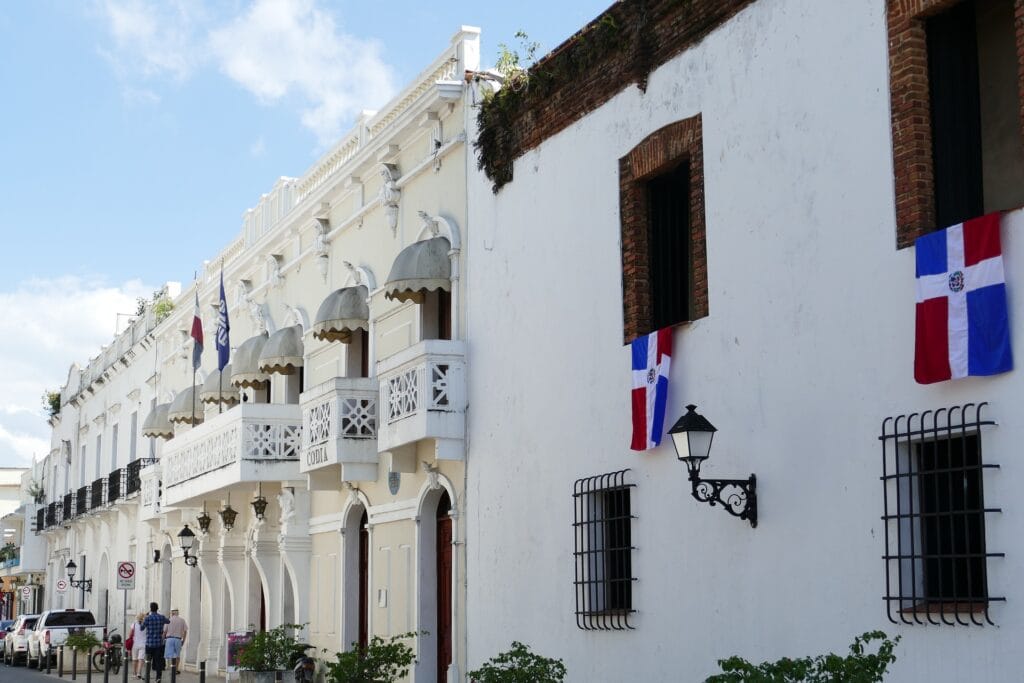
Calle Las Damas, located in the heart of the Zona Colonial in Santo Domingo, is the oldest street in the Americas. This charming cobblestone road dates back to the early 1500s and is surrounded by important historical sites. It is named after noblewomen like Doña María de Toledo, who was married to Diego Columbus, the son of Christopher Columbus.
Calle Las Damas represents the rich colonial history of the Dominican Republic and plays an active role in the city’s culture and tourism. With its well-preserved buildings and historical value, it’s one of the most popular and bustling streets in the Zona Colonial.
What is the history of the Fortaleza Ozama?
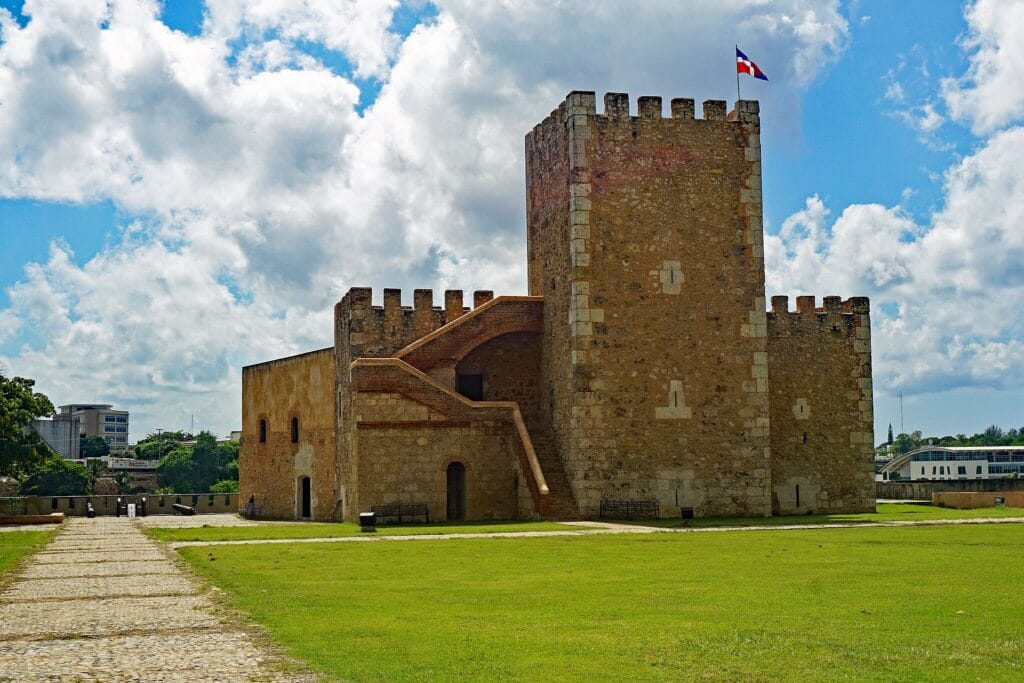
The Fortaleza Ozama, also known as Ozama Fortress, is the oldest military fortress built by Europeans in the Americas. It is located at the mouth of the Ozama River in the Colonial Zone of Santo Domingo, Dominican Republic. This fortress was constructed to protect the city from pirates and other enemies during the early days of colonization.
Fortaleza Ozama is an important part of Santo Domingo’s history, giving us a glimpse into how the Spanish defended their very first city in the Americas. It’s a great spot for history enthusiasts and tourists to explore, especially since it’s part of the UNESCO recognized Colonial Zone.
What is Santo Domingo famous for?
Santo Domingo is well-known as the oldest city in the Americas and it has a continuous European settlement. It has a rich history, especially in the Zona Colonial, which features the very first cathedral and hospital in the New World. Besides its historical significance, Santo Domingo is lively and colorful, offering a vibrant music scene, tasty Dominican food, and stunning beaches along the Caribbean Sea.
Why do we need to preserve Santo Domingo significantly for us and future generations?
Preserving Santo Domingo is really important for a few key reasons. First, the city is filled with history and culture, with beautiful old buildings and influences from different peoples and eras. By maintaining these historical places, we help future generations discover and learn about our past.
Preserving the environment and local traditions strengthens the community’s identity and encourages tourism, which is important for the local economy. In short, protecting Santo Domingo is about keeping our heritage alive, boosting cultural pride, and ensuring a bright future for everyone.
Why should you visit the Colonial city of Santo Domingo as a visitor?
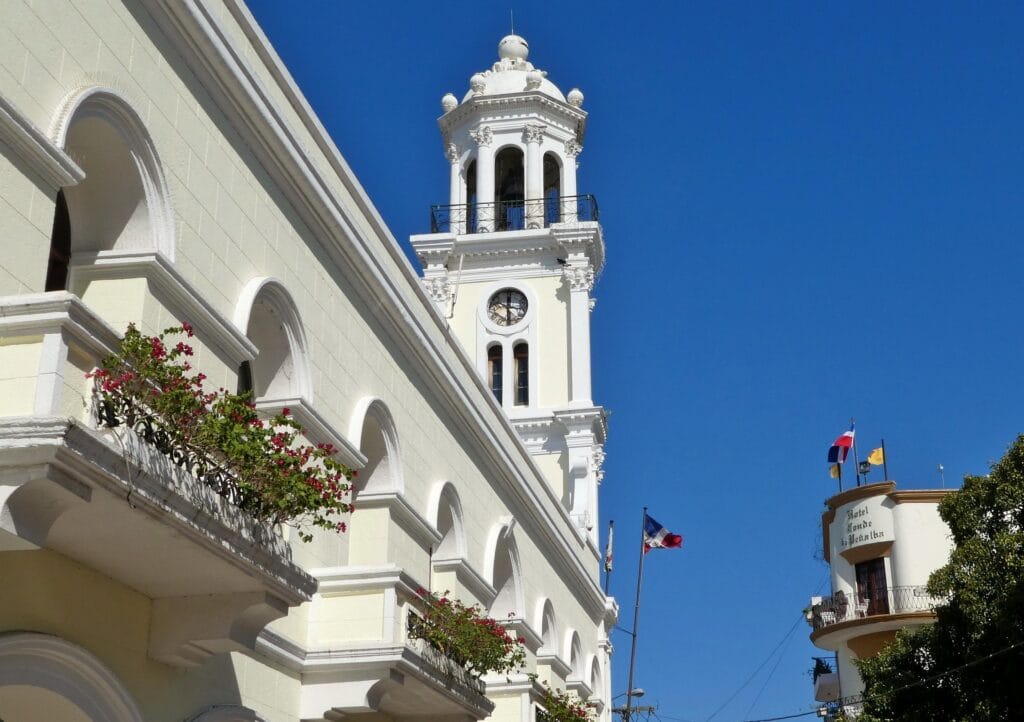
Santo Domingo, the Colonial city, is a must-see for anyone traveling. It’s the earliest European settlement in the Americas that’s still lived in today, filled with rich history and culture. You’ll find many beautiful old buildings that date back to the colonial period, including the first cathedral, hospital, and university in this part of the world. The charming cobblestone streets and lovely plazas give the city a unique vibe that feels like stepping back in time.
Additionally, Santo Domingo has delicious Dominican food, lively nightlife, and friendly locals who make you feel at home. Whether you love history, enjoy good food, or are just looking for a fun adventure, Santo Domingo has something to offer everyone.
How will you plan your visit to capture the best of Santo Domingo’s vibrant nightlife and artistic expressions?
Don’t miss out on the chance to immerse yourself in the captivating history and vibrant culture of Santo Domingo! Whether you’re strolling through the historic streets of the Zona Colonial, visiting iconic landmarks, or savoring delicious Dominican cuisine, there’s something for every traveler. Start planning your journey to the oldest city in the Americas today, and discover the magic of Santo Domingo for yourself! Book your tickets and embark on a mesmerizing adventure through time!
When you’re planning your adventure, enhance your travel experience by using trusted websites like GetYourGuide and Trip.com! These platforms offer a variety of enjoyable tours, activities, and accommodation options to suit every traveler’s needs.
- GetYourGuide offers a wide variety of unforgettable travel experiences. You can choose from tickets to Popular Attractions, Transportation Options, City Passes, Guided Tours, Hop-on Hop-off Bus Services, Water Activities, Day trips, and Trips that last several days in many locations around the world.
- Trip.com makes it easy to combine Flights and Hotels, Trains, Car Rentals, Airport Transfers and Attractions & Tours to create the perfect travel package tailored just for you.
Start your journey with our reliable travel partners and unlock the best of Santo Domingo and beyond!
Disclaimer
In this post, affiliate links are included and those links are associated with well-known travel companies such as GetYourGuide and Trip.com. If you choose to purchase or book a service using those links, we may earn a commission at no additional cost to you. We focus on recommending products and services that are helpful to you and we appreciate your support!
Conclusion
We hope you find this information helpful for your next trip. If you want to learn more, check out our other travel blog posts. We cover many topics, including amazing places to visit and helpful travel tips. Whether you’re looking for hidden gems, new cultures, or helpful advice, there’s something for everyone.
Additionally, If you enjoyed the information we shared, don’t forget to explore our other travel product reviews to make your journey even better! Please take a moment to look through our previous posts and let your sense of adventure guide you on your next journey! We wish you happy travels and look forward to sharing more with you in our next blog post!




